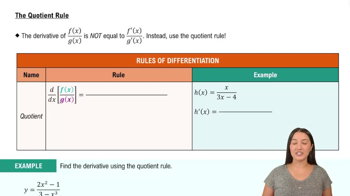Root Finding
2. Use Newton's method to estimate the one real solution of x^3 +3x + 1 = 0. Start with x_0 = 0 and then find x_2.
 Verified step by step guidance
Verified step by step guidance Verified video answer for a similar problem:
Verified video answer for a similar problem:



 5:53m
5:53mMaster Finding Differentials with a bite sized video explanation from Patrick
Start learning